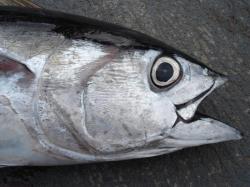A Step Back On Bigeye Tuna For Hawaii
December 28, 2017 | 1 min to read

More than half of the world’s tuna supply comes from the western and central Pacific Ocean. Tuna fisheries contribute more than $5 billion to the region’s fishermen annually, and by the time tuna from the region reach the final point of sale, they’re worth more than $22.68 billion a year across the supply chain.
The tunas of the Pacific are an incredibly valuable natural resource to Pacific islands, and Hawaiian fishermen in particular benefit from a healthy population of bigeye tuna, one of the larger species that traverse the Pacific. Sustainable management of the species is critical to ensuring not only a healthy ocean but also strong local economies.
There were high hopes among countries, industry, and nongovernmental organizations that the Western and Central Pacific Fisheries Commission would, at its meeting earlier this month, secure the long-term health of the tropical tuna fisheries through further development of a more effective and transparent management approach known as harvest strategies. This approach uses available data on a fish stock to create frameworks and rules that member countries can agree on in advance of decisions on quotas, taking much of the political pressure out of management.
To read the rest of the story, please go to: Civil Beat
